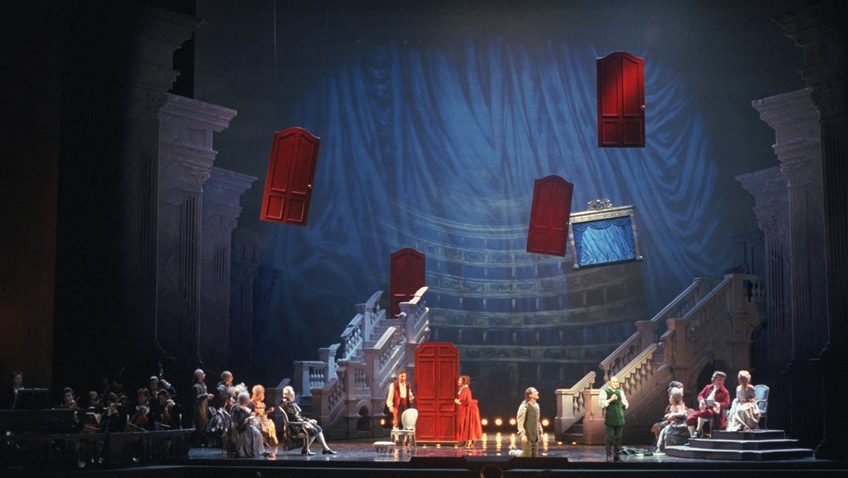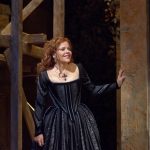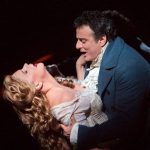John Corigliano’s The Ghosts of Versailles, directed by Colin Graham and conducted by James Levine, premiered at The Metropolitan, New York in 1991.
Corigliano had long wanted to write an opera buffo that would be large in scale. The scale is so large that the Met could not afford to repeat it.
The ghosts are Marie Antoinette and Louis XVI and their court at the time of the French Revolution.
The way the ghosts are behaving, hair unkempt, twitching and mad-eyed, I thought they were all crazy and I was at the asylum of Charenton watching the inmates performing the persecution and execution of Marie Antoinette.
Teresa Stratas has the demanding role of the queen who mourns her loss of life. Tiny, frail, dignified, and with her sad eyes, Stratas is deeply affecting.
The king (James Courtney, a convincing lookalike) commissions Beaumarchais (Hakan Hagegard) to write an opera.
Will Haufmann’s libretto takes as its starting point La mere coupable, the third play in Beaumarchais’s Figaro trilogy which includes The Marriage of Figaro and The Barber of Seville.
The libretto is all over the place, complex and overlong. The score is a wide range of styles with particular reference to Mozart and Rossini. There is even farce while people are waiting to be guillotined.
Beaumarchais’s falls in love with the ghost of Marie Antoinette and wants to save her from the guillotine by rewriting history and taking her to Philadelphia. “I can bring you back to life!” he claims.
Louis challenges Beaumarchais to a duel; but it is difficult to kill somebody if they are already dead.
Beaumarchais is furious when Figaro (a lively performance by Gino Quilicio) takes over the play and starts improvising. He is so furious he decides to enter his play.
Figaro has an amusing patter song, boasting of his many abilities, a glorious parody of Rossini which out Figaro’s Figaro. Susanna (Judith Christie) has a tender aria.
They attempt to save Almaviva (Peter Kazaras) and Rosina (Renée Fleming) from the guillotine Almaviva’s illegitimate daughter and Rosina’s illegitimate son (by Cherubin) are in love but Almaviva has already promised Begearss that he can marry her.
Begearss (a character in La mere coupable) is the villain of the piece, a spy for the French Revolution. Graham Clark, in great vocal and physical form, stands on his hands, slides down bannisters and crawls all over the stage. He’s a great rabble-rouser and that includes the audience who cheer his aria, “Long Live the Worm”.
A ball at the Turkish Embassy allows for a lot of Arabian kitsch and a comic revue turn by Marilyn Horne, who is cast as a former belly-dancer past her sell-by date, a role specially written for her. Figaro arrives in drag, disguised as a dancing girl.
There’s a twenty-year flashback in which the young Rosina and the young Cherubin have a rapturous duet. Marie Antoinette and Beaumarchais join them to make a quartet, one of the productions high spots.
The opera ends on a serious note. Marie Antoinette stands trial for treason and incest with her son. She refuses to let Beaumarchais rewrite history and she is guillotined. They are reunited in heaven
The only place nowadays to see The Marriage of Figaro and The Barber of Seville is in an opera house. Has any theatre company thought of staging the Figaro plays as a trilogy and on Saturdays performing all three on one day, morning, afternoon and evening?
NB operagoers. The Metropolitan New York is streaming a different opera for free every night. To find out what is on click here.
To learn more about Robert Tanitch and his reviews, click here to go to his website 




